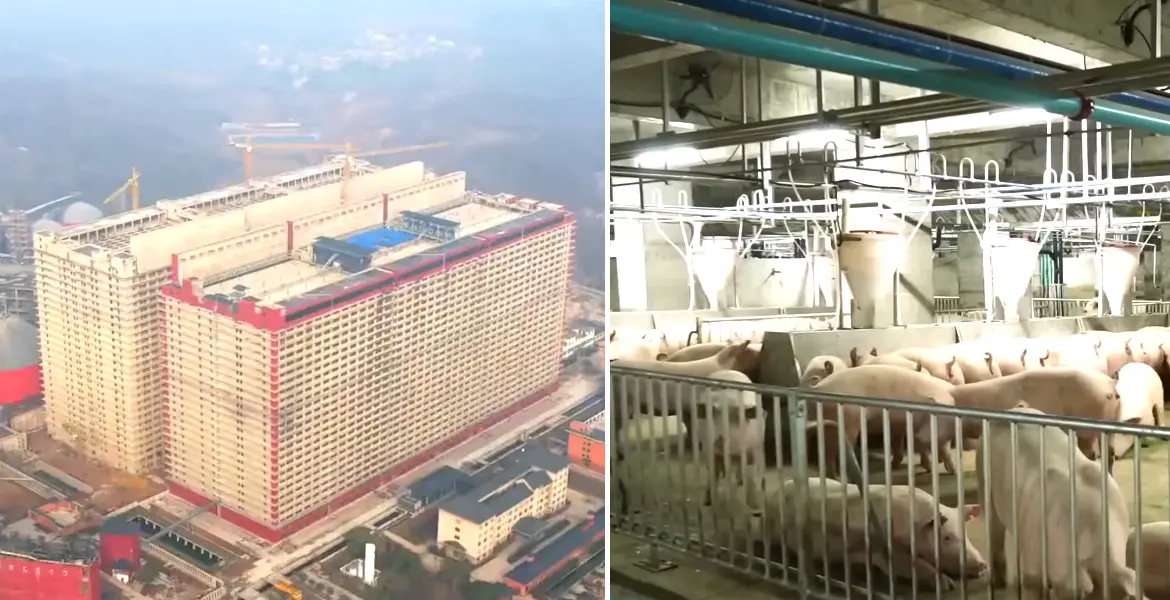China’s new pork production is raising pigs in giant skyscrapers to produce more meat after losing much of its production to African swine fever a few years ago.
The facility is described by many as grotesque and experts say the new production increases the risk of further disease spread.
In October last year, China opened the doors to two new twin skyscrapers in the city of Ezhou. The 26-storey buildings will not house working people – they will be used to raise pigs.
From the insemination of sows, to piglets that grow into full-grown pigs, the new pig production facility will meet China’s pork needs and be able to slaughter about 1.2 million pigs each year, reports The New York Times.
China has a great fondness for pork, which used to be eaten only at special feasts but is now part of the everyday diet. China consumes about half of the world’s pork. Meat production is described by China’s government on Twitter as a “profitable high-tech facility”. The plant will have temperature and ventilation controls that will also allow the animals to be fed at the touch of a button. Even the faeces are collected, measured and reused.
The plant is described by many as dystopian and grotesque. Several experts also warn that the facility poses major biosecurity risks. For example, it is common for pig farmers to spread out their farms to reduce the risk of disease. If disease gets into the plant, it will spread like wildfire, says New York University professor Matthew Hayek.
– Intensive farms can reduce the interaction between domestic and wild animals and their diseases, but if a disease enters the farm it can spread between the animals like wildfire, he told The Guardian.
China last had a massive outbreak of African swine fever, a deadly virus for pigs and wild boar, in 2018 to 2020 when it lost about 100 million pigs. The Ezhoue plant will help rebuild production.
Hayek says he’s heard about several reports on biosecurity and sustainability regarding the plant, but there’s little evidence that it’s actually true. Professor Dirk Pfeiffer of One Health at the City Univeristy of Hong Kong agrees, arguing that the more animals crowded in, the greater the risk.
– The higher the animal density, the greater the risk of spreading and amplifying infectious pathogens, as well as the risk of mutation.









